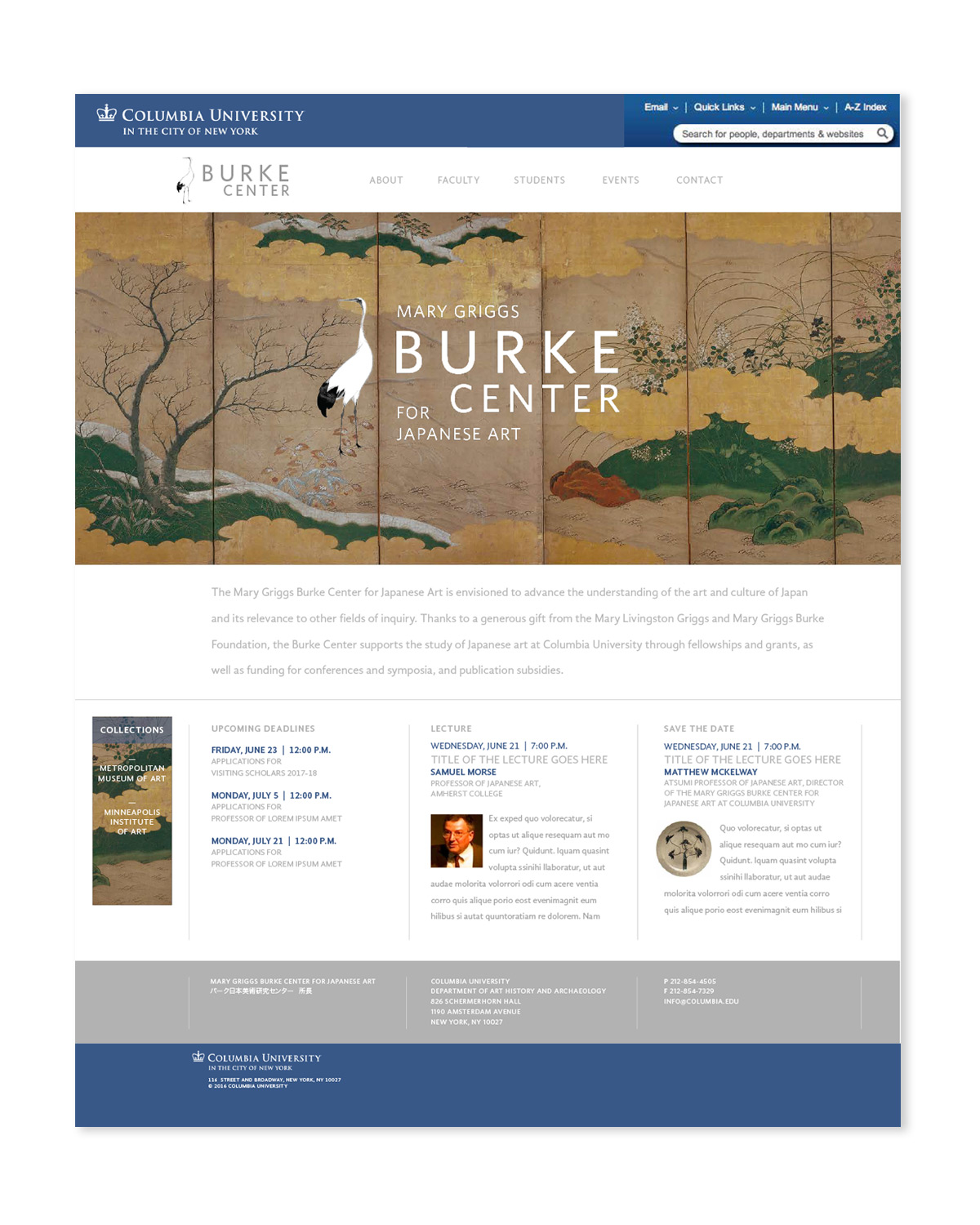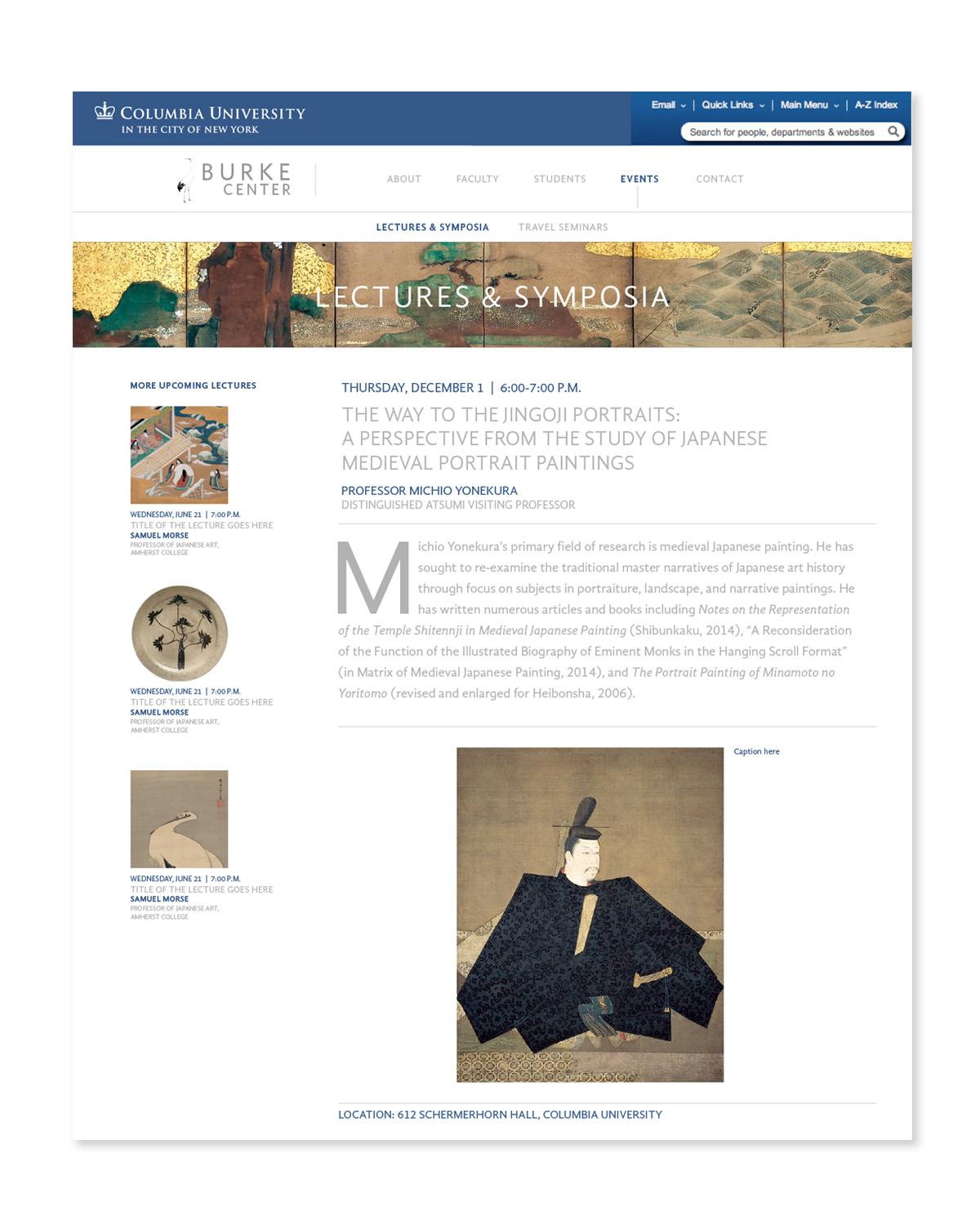Columbia University School of Art
Mary Griggs Burke Center for Japanese Art
When Columbia University received a multi-million dollar gift from the Mary Griggs Burke Foundation to found this new center for the study of Japanese Art, they needed an identity that would reflect the unique nature of the program and also work within the visual world of the University.
Over the course of her life, Mary Griggs Burke amassed the largest collection of Japanese Art outside of Japan. Upon her death, the massive collection was split between the Metropolitan Museum of Art and the Minneapolis Institute of Art, while her intellectual legacy was left with Columbia in the form of this Center.
When designing the Center’s identity, we kept the typography consciously modern and spare to reflect its forward-looking nature. Cranes were a favorite of Mrs. Burke’s, and the line weight of this one blended nicely. The website, while functional in nature, showcases art from the Burke Collection at every opportunity—including tiny details playfully paired with each professor's bio.
Columbia University:
Classical Studies Graduate Program
The job of this site was to show what a terrific place New York City is for studying classical art. Large images show the treasures that abound in the city, while an active calendar lists the many lectures and exhibitions that will appeal to the prospective scholar.
Columbia University:
Mapping Mesopotamian Monuments
Professor Zainab Bahrani and her intrepid team from Columbia University's Art History Department devote themselves to photographing and cataloguing important historic sites in Iraq, Syria and Turkey, many of which are under threat from human sprawl, environmental factors and, in many cases, deliberate destruction. Over the years this team has taken thousands and thousands of images (each site will have over 100) which needed to be organized and presented in a way that 1) preserved the collection 2) made them accessible to the scholarly community and the public 3) made the case for why the preservation of these monuments is so important.
As much organizational as a design solution, this site presents the initiative on three levels. The first is a broad overview which lays out the project and states its importance; the second is a more thorough review of the history of the region and the monuments — we likened it to a survey course, "Monuments 101"; and third is a comprehensive catalogue of the images searchable by name, region, type of structure and time period. Specific locations are password protected so as not to abet those that would do harm.
Obviously, it was important to have the images themselves prominent throughout the site.








